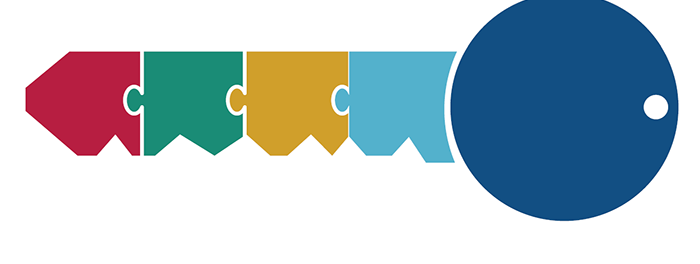Purchased goods and services: addressing the most challenging Scope 3 emissions. By Anuj Saush
Four key steps
The phrase ‘Purchased goods and services’ may seem innocuous, but sustainability executives know better.
Corporate emissions originate from various sources, which are grouped into ‘scopes’. Scope 1 refers to direct emissions from owned or operated assets e.g., emissions from the burning of diesel fuel in company trucks. Scope 2 refers to indirect emissions from purchased energy used in the company’s own operations, e.g., electricity used in company facilities. Scope 3 refers to indirect emissions originating from all other sources in the upstream and downstream parts of the reporting company’s value chain, e.g., processing and production of raw material and emissions coming from employee commuting.
Across industries, ‘purchased goods and services’ usually represent supply chains’ highest source of ‘Scope 3’ emissions. Inherently data-intensive, this can be one of the most difficult to handle categories of Scope 3 emissions, as they require extensive supplier engagement and collaboration and potentially the innovation of and reformulation of existing products and processes.
Actionable strategies are emerging, however. The Conference Board, a global think tank providing businesses with trusted insights for what’s ahead, has developed a realistic sustainability pathway for executives to reduce their companies’ purchased-goods-and-services emissions. There are four key steps to an effective Scope 3 emissions reduction strategy: screen and prioritize; acquire data; refine supplier base; and, finally, set targets, monitor, and audit.
 Emissions screening and prioritization
Emissions screening and prioritization
Prioritizing data collection efforts requires ranking Scope 3 emissions and then focusing on the most significant categories. One way to rank Scope 3 categories is based on the activities’ relative financial significance. However, spending and revenue do not always correlate well with emissions and actual environmental impact. Instead, companies must work toward using actual data – unit of measure of a product in dollars, kilograms, tonnage, and the associated emissions factor – to accurately quantify Scope 3 emissions. While the required data may be incomplete, for efficient and reliable monitoring of Scope 3 emissions in the future, companies should create robust quality-controlled master data management systems.
Acquire data and explore potential
Companies typically use databases such as the Evoinvent and Gabi TS for materials and products emission factors or information from CDP supplier databases and Ecovadis ratings to prepare their emissions inventory. Although these cover a wide range of materials, products, and services, companies may not be able to find all emissions factors they need to have a complete inventory of greenhouse gases. It would, of course, be ideal if suppliers provided the specific data, but not all suppliers will be able to support such requests. It is most likely that a company will have to use a hybrid approach: a combination of a spending-based method (using financial data to calculate estimated emissions, for example), an average data method (converting volume of purchased goods to emissions estimates), and supplier-specific method (using actual life cycle analysis to calculate emissions, for example). While this hybrid method may not be fully accurate, it helps to identify the biggest sources of upstream value chain emissions with sufficient accuracy to start engaging in the joint management of emissions reductions.
Refine supplier base
Companies should identify the suppliers with the greatest estimated potential to reduce emissions. They are the first targets to engage, and the easiest wins occur when the company has a strong buying position – lots of influence, in other words – and the supplier has strong emissions reduction potential. Where the company’s influence is high but the potential for the supplier to actually effect reductions is low, it can begin joint initiatives to reduce and replace the input materials or services in question. Where there is low influence over the supplier and low potential of reduction, switching suppliers and/or redesigning the product might be the right move. Where there is high potential for the supplier to reduce emissions, but the company has little influence over the supplier, it may want to collaborate with other customers to improve sustainability. Of course, when forging these alliances, all parties must be careful to avoid any potential competition law breach. Once a company has mapped out and prioritized suppliers, it should engage with them to receive primary data.
Agree on targets and evaluate
Once the reporting company has calculated its Scope 3 emissions footprint and reduction potential, it should create a specific plan to achieve them. While setting their targets, companies must balance ‘ambitious’ and ‘achievable’ and need to be transparent about their underlying assumptions. Additionally, companies should set both short-term and long-term targets. The former allows them to continuously monitor progress and incremental reductions as well as alert when adjustments due to changed circumstances are required.
Monitoring progress requires a system that can provide frequent Scope 3 emission calculations, enabling companies to detect deviations and quickly course correct. It can help to encourage such data collection efforts within the company by showing immediate results to all managers involved.
The transition to a low-carbon economy requires companies to review their entire value chain. For some companies, e.g., re-sellers, the only way to reduce Scope 3 emissions is to have their suppliers reduce theirs. Addressing Scope 3 emissions is a significant undertaking. The right prioritization, however, will allow enterprises to achieve it in a reasonable timeframe, thus help create a more resilient supply chain.
Anuj Saush
www.conference-board.org
Anuj Saush is Center Leader, European Governance & Sustainability Center at The Conference Board, the member-driven think tank that delivers trusted insights for what’s ahead. Founded in 1916, it is a non-partisan, not-for-profit entity holding 501 (c) (3) tax-exempt status in the United States.
